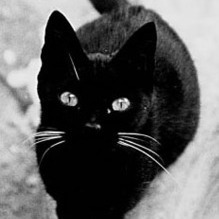
Note: While authors are asked to place warnings on their stories for some moderated content, everyone has different thresholds, and it is your responsibility as a reader to avoid stories or stop reading if something bothers you.
Short Scribbles - 2. On the domination of the galaxy
When a civilisation reaches the interstellar era, survival becomes a game of numbers. The faster a sapient race can reproduce, the more planets it can settle and the more resources at its fingertips. One of the ultimate forms of life then is mechanical.
No time is needed to reach maturity once created, and every new unit can create an unlimited number of more. There is no need for binary sexes as used in most organic lifeforms, so only one individual is ever needed to recover the species. Mechanical units can be theoretically immortal, and they can recode or modify themselves much more efficiently than organics.
Though organic lifeforms can utilise genetic engineering at advanced levels of civilisation, mechanicals require only their own existence to reprogram themselves. Of course, metallic beings evolve naturally in only rare cases, the only known occurrence being the Oup. Most so called ‘metal civilisations’ in the galaxy were artificially created by organics. Some of these were made as servants and their masters lost control of them, others outlived their master civilisations, and some were created out of sheer scientific curiosity and granted free will.
Organics do have some methods of fighting back against this. Extremely advanced civilisations have replaced organic reproduction with cloning, which has proven faster than natural reproduction. In addition some forms of life are naturally fast reproducers, such as insects. Hiveminds are common in insects and unicellular live, a useful technique allowing individual units to be created faster due to less complex systems on board.
Yet more systems exist. The pathogenic Ignik replace reproduction with stealing the individuals of other species, sapient and non-sapient, and manipulating their existing bodies to grow the brains required for the species to operate as sapient beings.
Plant-based sapience is rare but the Galc are an interesting example in the discussion of reproductive speed, given their unusual ability to warp space and time to seed themselves across the universe. An individual requires an entire planet to support itself, so the species had to evolve interstellar travel. Theoretically, they started with the ability to catapult their seeds into space, where they could drift until luck made them reach a planet, but this is hugely inefficient.
Theory suggests at some point the Galc encountered intelligence life and replicated their technology biologically, which means they can now send their seeds throughout all time and space. One plant may produce a thousand seeds in year, and many even seed itself. This ability to move their seeds through time mean the Galc can move backwards from where they are to seed a million years earlier, giving them a million years to reproduce in, making extremely efficient use of time.
Interestingly as a result, we do not know in which era when the Galc even began existence, possibly they are a future species - not one from our past or present time. This poses some interesting issues when it comes to physics and paradoxes, but that is not for this paper.
-
 5
5
Note: While authors are asked to place warnings on their stories for some moderated content, everyone has different thresholds, and it is your responsibility as a reader to avoid stories or stop reading if something bothers you.
Recommended Comments
Chapter Comments
-
Newsletter
Sign UpSign Up and get an occasional Newsletter. Fill out your profile with favorite genres and say yes to genre news to get the monthly update for your favorite genres.


